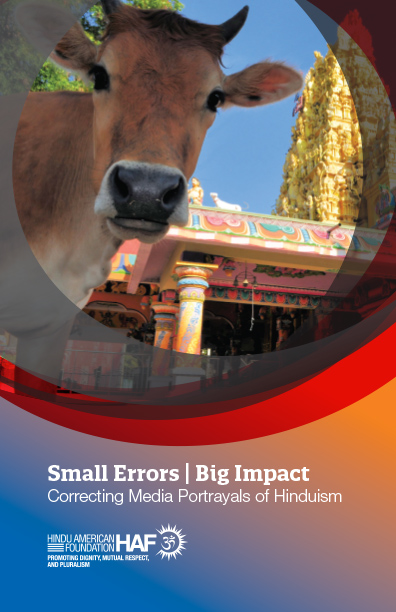 UNITED STATES, May 9, 2018 (HAF): Hindu Americans comprise one of the fastest growing populations in the United States. The Hindu American population currently numbers around 2.5 million. This does not include the estimated 32 million people who derive inspiration from Hindu spirituality and engage in Hindu practices such as yoga and meditation. With growing numbers comes an increased need for understanding of Hindus and their traditions. But this need has heretofore been left unmet or, worse yet, undermined by the dichotomy between Hindu understandings of their traditions and how they are described in mainstream media. Too often media coverage of Hinduism relies on stereotypical fallacies and the analyses of non-Hindu “experts,” who sometimes are not committed to understanding the tradition as it is lived and understood by its adherents.
UNITED STATES, May 9, 2018 (HAF): Hindu Americans comprise one of the fastest growing populations in the United States. The Hindu American population currently numbers around 2.5 million. This does not include the estimated 32 million people who derive inspiration from Hindu spirituality and engage in Hindu practices such as yoga and meditation. With growing numbers comes an increased need for understanding of Hindus and their traditions. But this need has heretofore been left unmet or, worse yet, undermined by the dichotomy between Hindu understandings of their traditions and how they are described in mainstream media. Too often media coverage of Hinduism relies on stereotypical fallacies and the analyses of non-Hindu “experts,” who sometimes are not committed to understanding the tradition as it is lived and understood by its adherents.
There are many example of omissions, oversights, and errors in media coverage public discussions of Hinduism. One example is avoiding the term Hindu. Replacing Hindu or Hinduism are terms such as Eastern, ancient Indian, Indic, yogic, or Vedic. While not entirely inaccurate, articles in these same media outlets frequently refer to or attribute directly other beliefs, practices, and sacred texts to the appropriate, major world religion, including Buddhism, Christianity and Judaism. Another misrepresentation is conflating caste-based discrimination with Hindu teachings. Both caste-based discrimination and gender inequity are social realities throughout South Asia and across communities of all religious backgrounds. The implication that the Hindu religion is uniquely and intrinsically discriminatory is misplaced and erroneous. Other misrepresentations include: Hinduism’s scriptures promote violence, Hindus worship cows, the Shiva Lingam is an erotic symbol, and Hindus worship idols.
There is much more at “source” above.





